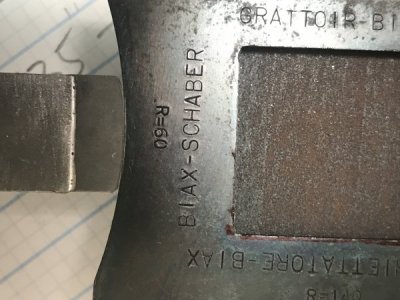I finished cleaning up my 15mm wide blade today on my Glendo. I just inked up the blade with a sharpie, scribed a 60mm radius from a Biax gage, and ground to the line by hand with a 0 degree bevel and a 260 grit wheel. It took maybe 10 or 15 minutes, but I prefer the slow speed of a Glendo to the high pucker-factor of a green wheel or diamond cup on a high speed grinder — I prefer to make my mistakes slowly.

A smarter person would have thought to take a "before" picture, but here's the after, anyway:
View attachment 295315
This was the blade that was causing me grief, but despite fixing the issue I've since switched to a 20mm wide, 150 mm long blade with a 60 mm radius and honed to a -8 degree bevel on a 1200 grit wheel, with a long stroke (8 mm, one half turn from the maximum 10mm stroke of my ancient Biax). All of this is to follow Rich's guidance as precisely as I'm able as I rough/intermediate scrape a 36" straightedge. I'll post an update within a few days, but unsurprisingly, Rich's advice seems helpful: today's results were good.


